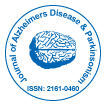Parkinson's Disease: Facing the Challenges of a Progressive Disorder
Received: 22-Nov-2024 / Manuscript No. JADP-24-156663 / Editor assigned: 25-Nov-2024 / PreQC No. JADP-24-156663 (PQ) / Reviewed: 10-Dec-2024 / QC No. JADP-24-156663 / Revised: 17-Dec-2024 / Manuscript No. JADP-24-156663 (R) / Published Date: 24-Dec-2024 DOI: 10.4172/2161-0460.1000620
Description
Parkinson’s Disease (PD) is a progressive neurological disorder that primarily affects movement. It results from the degeneration of dopamine producing neurons in the brain, leading to a variety of motor and non-motor symptoms. While the exact cause is not fully understood, the disease is believed to involve a combination of genetic and environmental factors. PD typically manifests in people over the age of 60, though it can occur earlier in rare cases.
Symptoms of parkinson’s disease
The symptoms of Parkinson’s disease are motor-related including:
As the disease progresses, these motor symptoms tend to worsen. Non-motor symptoms, which are often overlooked, can include depression, sleep disturbances, constipation, cognitive changes and even changes in speech and writing. Some individuals may also experience autonomic dysfunction, such as low blood pressure or sweating abnormalities.
Causes and risk factors
The exact cause of Parkinson’s disease remains unclear, but study claims it can be a combination of genetic and environmental factors. In some cases, genetic mutations may predispose individuals to develop the disease, particularly in early onset Parkinson’s. However, the majority of PD cases are unclear, with no clear family history. Age is the most significant risk factor, as the disease typically affects people over 60, with men being slightly more prone than women.
Diagnosis
There is no definitive test for Parkinson’s disease. Diagnosis is based on clinical evaluation, including a thorough medical history, physical physical examination and neurological assessment. Doctors may also use imaging techniques like Magnetic Resonance Imaging (MRI) or Computed Tomography (CT) scans to rule out other conditions that may mimic Parkinson’s symptoms. In some cases, a trial of Parkinson’s medication (such as levodopa) may be used to assess response and help confirm the diagnosis.
Treatment options
While there is no cure for Parkinson’s disease, various treatment options aim to alleviate symptoms and improve quality of life. The primary treatment involves medications that either increase dopamine levels or mimic dopamine’s action in the brain. The most commonly prescribed drug is levodopa, often combined with carbidopa to enhance its effectiveness and reduce side effects.
Other medications, such as dopamine agonists, may also be used, particularly in the earlier stages of the disease. In cases where medications are no longer effective or cause significant side effects, surgical options like Deep Brain Stimulation (DBS) may be considered. DBS involves implanting a device that sends electrical impulses to specific areas of the brain, helping to control movement.
Conclusion
Parkinson’s disease is a complex and debilitating disorder that affects millions worldwide. While the search for a cure continues, advancements in treatment have made it possible for many patients to manage symptoms and maintain a good quality of life. Early diagnosis and a comprehensive care plan are important to ensuring the best outcomes for those living with PD. Emotional and psychological support is also critical, as depression and anxiety are common in Parkinson’s patients. Support groups and counseling can provide valuable assistance to both individuals and their families.
Citation: Bloemer A (2024). Parkinson’s Disease: Facing the Challenges of a Progressive Disorder. J Alzheimers Dis Parkinsonism.14: 620. DOI: 10.4172/2161-0460.1000620
Copyright: © 2024 Bloemer A. This is an open-access article distributed under the terms of the Creative Commons Attribution License, which permits unrestricted use, distribution, and reproduction in any medium, provided the original author and source are credited.
Share This Article
Recommended Journals
Open Access Journals
Article Tools
Article Usage
- Total views: 243
- [From(publication date): 0-0 - Apr 02, 2025]
- Breakdown by view type
- HTML page views: 86
- PDF downloads: 157
